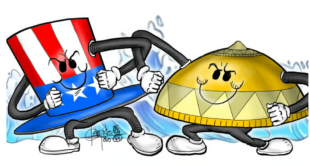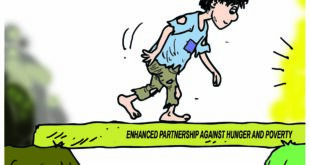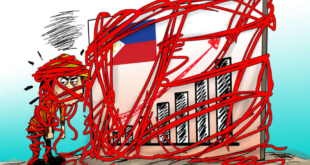The cloak and dagger skepticism goes all the way to the People’s Initiative push, which the House leadership denied having initiated, although it was clear who the beneficiary of the move would be.

The level of skepticism between the House of Representatives and the Senate over the Charter change push has worsened despite calls for a ceasefire after senators implied their signatures were forged in a portion of the national budget.
In return, members of the bigger chamber accused their counterparts in the other chamber of paying lip service and manipulation for making the allegations after Senate President Migz Zubiri and Speaker Martin Romualdez had agreed to end the bickering over cha-cha and “to work professionally.”
Sparks were reignited after Senator Imee Marcos alleged that senators were not aware of the P26.7-billion Ayuda sa Kapos ang Kita Program, or AKAP, as an item in the 2024 national budget.
Worse, she implied that the senators were not aware that their signatures appeared on the page in the 2024 General Appropriations Act that contained the provision for AKAP, that they were inserted by the House.
The cloak-and-dagger skepticism goes all the way back to the People’s Initiative push which the House leadership denied having initiated although it was clear who the beneficiary of the move would be.
AKAP’s P26.7 billion was suspected of being the source of the cash incentives given to signatories of the PI petition that reached the required 12 percent of the population and three percent in every legislative district in record time.
The incentives under the scheme were made to appear as a legitimate social program. AKAP has indeed a confusing aim which the Department of Social Welfare and Development, the implementing agency, said is to prevent the “near poor” sector from spiraling down below the poverty line.
DSWD never cared to explain how they came up with identifying the “near poor” Filipinos since listing those in the poverty line for the Pantawid Pamilyang Pilipino Program or 4Ps is a monumental effort that remains a work in progress.
DSWD merely classified the “near poor” segment as the minimum wage earners “who are vulnerable to economic shocks.”
The loose definition thus is very suspicious as the program does not have any other compelling purpose aside from providing dole-outs.
Before divulging the AKAP, the Senate was combing the budget for the ways the expensive PI national campaign was being financed.
Members of the House fired back, saying the Senate’s allegation of fraud in the signing of the 2024 national budget was meant to smear the reputation of the House leadership.
“Is Senate President Juan Miguel Zubiri playing us?” one of the House leaders asked.
House members even suggested that Zubiri had lost his handle on his colleagues as leader of the chamber.
They said a “leadership vacuum” existed in the Senate and accused Senator Marcos of overreaching her authority.
The AKAP on its face is a poor excuse for a social amelioration program, raising suspicions about its real intent amid the long list of government dole-outs.
The 4Ps has never been found effective since the poverty level has remained near 20 percent even though the subsidy program has been in existence for years.
The near poor as defined in the AKAP program include those with jobs but who are not earning enough to sustain themselves and their families. The need therefore is for decent-paying jobs, not handouts from the government.
Launching another cash program for the “near poor” just before greasing the electorate in a PI campaign as is alleged should raise suspicions and those in the legislature are mandated to look into it.
To erase doubts, both chambers should simply drop the Cha-cha gambit and move on to more urgent legislative tasks.
Moreover, the AKAP funds should be realigned to projects with a bigger impact on the “near poor” like generating more good-paying jobs.
*****
Credit belongs to: tribune.net.ph
 Atin Ito First Filipino Community Newspaper in Ontario
Atin Ito First Filipino Community Newspaper in Ontario






